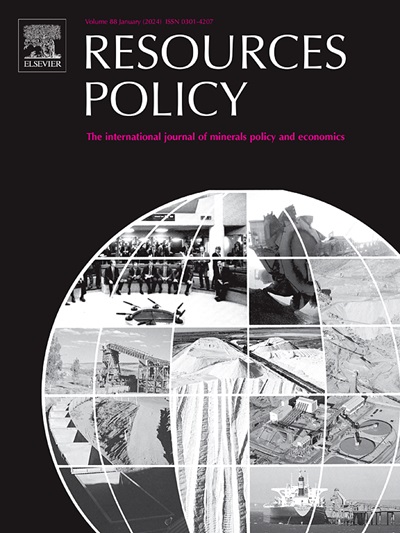将贵金属加入避险投资者的投资组合——黄金是唯一的吗?
IF 10.2
2区 经济学
0 ENVIRONMENTAL STUDIES
引用次数: 0
摘要
在危机期间,规避风险的投资者通常将黄金作为对冲市场风险的工具。然而,文献表明,黄金的避险属性是短暂的。因此,我们关注其他至少能像黄金一样有效保护投资者的贵金属,尤其是在市场承压时期。我们考虑五种贵金属,即黄金、白银、铂、钯和铜,以分析与每种贵金属相关的独特和市场风险,并以不同的组合方式使用它们构建最佳加权投资组合。我们发现,在投资组合中加入一个避风港是风险最小化的必要条件,但绝不是充分条件。黄金和白银都具有避险属性,但黄金和铜的最佳投资组合比黄金和白银的最佳投资组合提供了更高的对冲效率。事实上,当铜与其他贵金属以最佳比例组合时,其对冲效果比其他金属市场组合要好得多。我们的研究发现,由于铜在工业和非工业部门的多重用途,它已成为一种迅速崛起的对冲工具。因此,黄金-铜市场投资组合无疑是规避风险的投资者的最佳选择。本文章由计算机程序翻译,如有差异,请以英文原文为准。
Adding precious metals to a risk avert Investor's portfolio – Is gold alone?
Risk-avert investors generally take gold to act as a hedge against the market during crises. However, literature suggest that the safe haven property of gold is short-lived. We therefore look at other precious metals that could protect investors at least as effectively as gold, especially during periods of market stress. We consider five precious metals, namely, gold, silver, platinum, palladium, and copper to analyse the unique and market risks associated with each as well as construct optimum weighted portfolios using them in different combinations. We find that including a safe haven in a portfolio is a necessary condition to minimize risk but is in no way sufficient. Both gold and silver exhibit safe haven property but an optimum portfolio containing gold and copper offers a higher hedging effectiveness than that offered by an optimum portfolio containing either gold or silver. In fact, copper when combined in an optimal ratio with other precious metals, offers way better hedging effectiveness than other metal-market portfolio combinations. Our study finds copper as a rapidly emerging hedging instrument, driven by its manyfold uses in both the industrial and non-industrial sectors. Thus, a gold-copper-market portfolio would undoubtedly be the optimum choice for a risk-avert investor.
求助全文
通过发布文献求助,成功后即可免费获取论文全文。
去求助
来源期刊

Resources Policy
ENVIRONMENTAL STUDIES-
CiteScore
13.40
自引率
23.50%
发文量
602
审稿时长
69 days
期刊介绍:
Resources Policy is an international journal focused on the economics and policy aspects of mineral and fossil fuel extraction, production, and utilization. It targets individuals in academia, government, and industry. The journal seeks original research submissions analyzing public policy, economics, social science, geography, and finance in the fields of mining, non-fuel minerals, energy minerals, fossil fuels, and metals. Mineral economics topics covered include mineral market analysis, price analysis, project evaluation, mining and sustainable development, mineral resource rents, resource curse, mineral wealth and corruption, mineral taxation and regulation, strategic minerals and their supply, and the impact of mineral development on local communities and indigenous populations. The journal specifically excludes papers with agriculture, forestry, or fisheries as their primary focus.
 求助内容:
求助内容: 应助结果提醒方式:
应助结果提醒方式:


